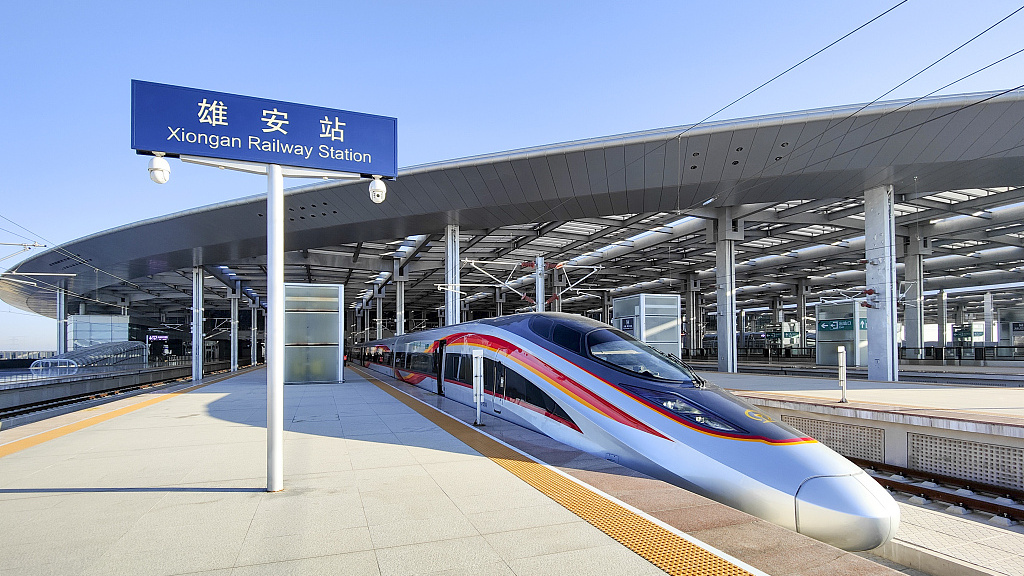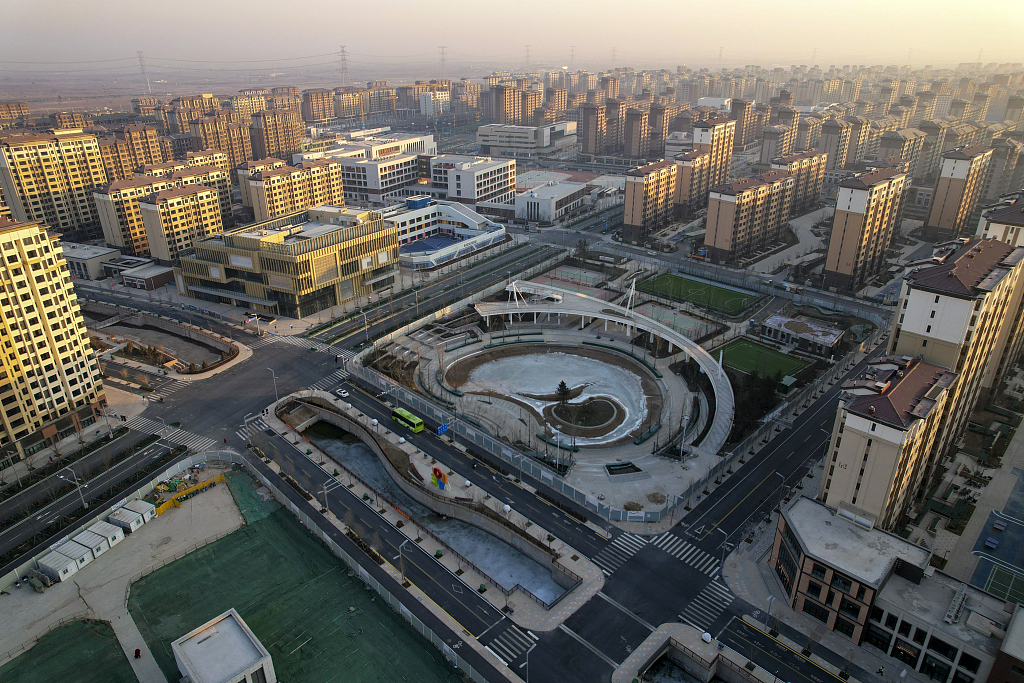
A Fuxing bullet train at Xiong'an Station, December 27, 2021. /CFP
A Fuxing bullet train at Xiong'an Station, December 27, 2021. /CFP
Editor's note: John Gong is a professor at the University of International Business and Economics and a research fellow at the Academy of China Open Economy Studies at UIBE. The article reflects the author's views and not necessarily those of CGTN.
April 1 marks the fifth anniversary of the official establishment of Xiong'an New Area, currently under construction just about 100 kilometers south of Chinese capital Beijing. Launched with much fanfare and billed as the millennial plan of national significance to China at the time, there hasn't been much news in the last two years amidst the seemingly never-ending pandemic we appear to be stuck in. Nevertheless, as they say about Rome, Xiong'an New Area is certainly also not going to be built in a day.
But we Chinese are proud of our construction prowess. If not in a day, maybe we can get it done in a decade. After all, Shenzhen was already a fairly decent city by the time the chief architect of China's reform and opening-up policy Deng Xiaoping visited it during his famous southern tour of China, just a bit over 10 years since the city's establishment. We would hope the city will display a similar picture as Shenzhen in another five years.
It was indeed billed as the new area of growth in China's north, hopefully somewhat comparable to Shenzhen in the south. But we know that is a lofty goal given Shenzhen's spectacular development into a world class metropolis in just 40 years.
China's regional economic development is kind of lopsided with many successful cities that are also heavy-weight GDP workhorses in the south, such as Shanghai and Shenzhen. The northern part of the country desperately needs a new place to show its development muscle. And so here comes this brand new city that is supposed to absorb some of Beijing's non-capital functions, but more importantly, develop into a vibrant hub of innovation and new technologies modeled after the Japanese city of Tsukuba.
Tsukuba was born in the early 1970s when Japan was transformed from a trading nation to a nation of science and technology. The Japanese government started to build a new city about 60 kilometers from Tokyo as a base for scientific research and innovations. In subsequent years, the Japanese government moved 40 research and education organizations over there. After many years of development, Tsukuba has acquired the venerable reputation as a science city.

Xiong'an New Area, north China's Hebei Province, January 1, 2022. /CFP
Xiong'an New Area, north China's Hebei Province, January 1, 2022. /CFP
Xiong'an New Area has a similar plan. In the last five years, it has devoted a tremendous amount of resources into building its infrastructure. A state-of-the-art high-speed railway station has been built. A grandiose municipal center has opened. Many new housing units have been built based on a new development model; they won't be sold but leased instead. Glitzy office buildings are waiting for new tenants to move in.
Similar to Tsukuba, these new tenants would be companies and organizations currently based in Beijing. The central government has said that it is initially focused on the relocation of six types of organizations, including large SOE's headquarters, public institutions, banks and financial companies, research institutes, hospitals and universities. So far major companies like China Huaneng Group have announced that they will move their headquarter operations over to Xiong'an New Area.
But ultimately Xiong'an New Area needs something more than just the relocation of entities from the Chinese capital city. The next phase of development would have to do something like Shenzhen has done, in terms of attracting industrial development based on emerging new technologies. The city government said it is betting on next generation information technologies, modern life sciences and biotechnologies, high-end modern service industries, new material sciences and green agriculture.
Time flies. If my casual bravado holds any water, Xiong'an New Area has five more years to develop into a really shining city in the north of China. We keep our fingers crossed that folks in Xiong'an won't disappoint us.
(If you want to contribute and have specific expertise, please contact us at opinions@cgtn.com. Follow @thouse_opinions on Twitter to discover the latest commentaries in the CGTN Opinion Section.)

